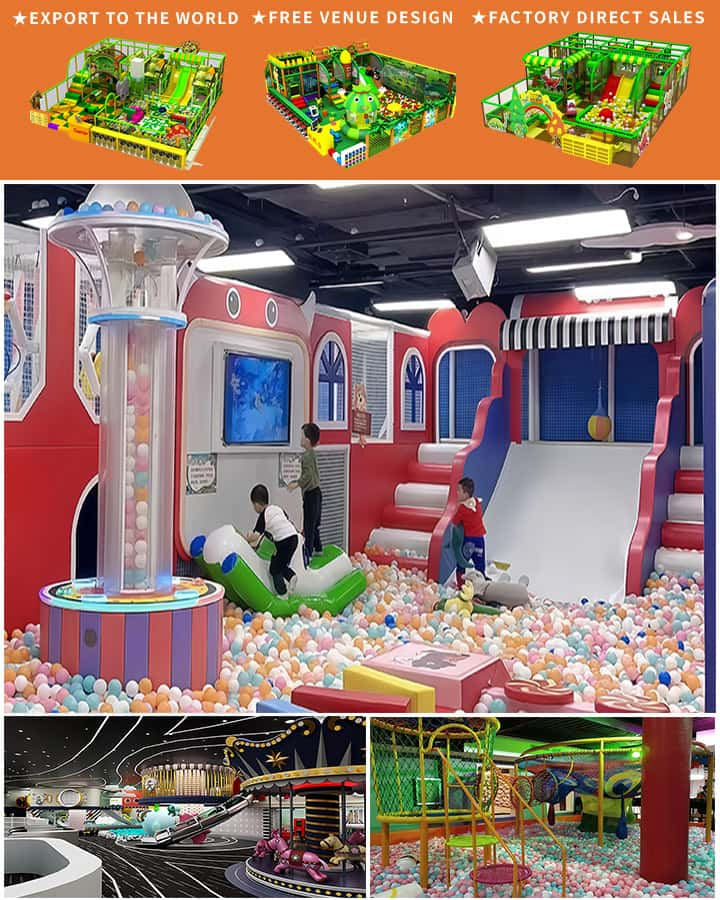Children’s indoor soft play equipment has become an increasingly popular choice for parents and guardians looking to provide a safe, engaging, and developmentally enriching environment for their little ones. These carefully designed play areas offer a myriad of benefits that extend far beyond simple entertainment, fostering physical, cognitive, and social growth in young children.
Physical Development: One of the most immediate and noticeable benefits of indoor soft play equipment is its contribution to physical development. These facilities often include structures like climbing frames, slides, ball pits, and obstacle courses that encourage children to engage in various forms of physical activity. This constant movement helps to improve gross motor skills such as balance, coordination, and agility. Additionally, navigating through soft play areas can enhance fine motor skills as children grip, reach, and manipulate different textures and objects.
 Cognitive Growth:
Indoor soft play environments are not just about physical exertion; they also stimulate cognitive development. The diverse array of colors, shapes, and textures found in these play areas captivates children’s attention, encouraging them to explore and learn about their surroundings. Problem-solving activities, such as figuring out how to climb to the top of a structure or maneuver around obstacles, help develop critical thinking and planning skills. Moreover, the sensory experiences provided by tactile elements—like soft foam blocks or textured mats—nurture sensory processing and perception.
Cognitive Growth:
Indoor soft play environments are not just about physical exertion; they also stimulate cognitive development. The diverse array of colors, shapes, and textures found in these play areas captivates children’s attention, encouraging them to explore and learn about their surroundings. Problem-solving activities, such as figuring out how to climb to the top of a structure or maneuver around obstacles, help develop critical thinking and planning skills. Moreover, the sensory experiences provided by tactile elements—like soft foam blocks or textured mats—nurture sensory processing and perception.
Social Interaction: Children’s indoor soft play equipment provides an ideal setting for social interaction, allowing kids to build important interpersonal skills. Whether they are playing side by side with peers or participating in cooperative games, children learn to communicate, share, and collaborate. These interactions are crucial for developing empathy, understanding boundaries, and forming friendships. Supervised playdates in these environments can be particularly beneficial for shy or socially anxious children, offering a controlled yet stimulating atmosphere where they can gain confidence.
Safety and Hygiene: Safety is paramount in the design and operation of indoor soft play equipment. High-quality materials such as cushioned foams, non-toxic plastics, and soft fabrics ensure that children are protected from injuries while they play. Additionally, the controlled indoor environment minimizes exposure to weather-related hazards and allergens, making it a safer alternative to outdoor play spaces, especially during extreme weather conditions. Routine cleaning and maintenance practices further guarantee a hygienic play environment, reducing the risk of infections and illnesses.
Parental Convenience: For parents, indoor soft play facilities offer a convenient and stress-free way to ensure their children are active and entertained. Unlike traditional outdoor playgrounds, which may be affected by weather or distance, indoor soft play centers are typically climate-controlled and readily accessible. Many facilities also provide amenities such as seating areas for parents, refreshment stands, and even educational workshops, creating a comprehensive experience that caters to both children and their guardians.
Conclusion: In conclusion, children’s indoor soft play equipment serves as a multifaceted tool for child development, combining physical activity, cognitive stimulation, and social interaction within a safe and controlled environment. As parents and caregivers seek enriching experiences for their children, these indoor play areas stand out as a premier choice, offering countless opportunities for learning, growth, and joy. Whether used for regular visits or special occasions, indoor soft play equipment proves to be an invaluable resource in nurturing happy, healthy, and well-rounded youngsters.




